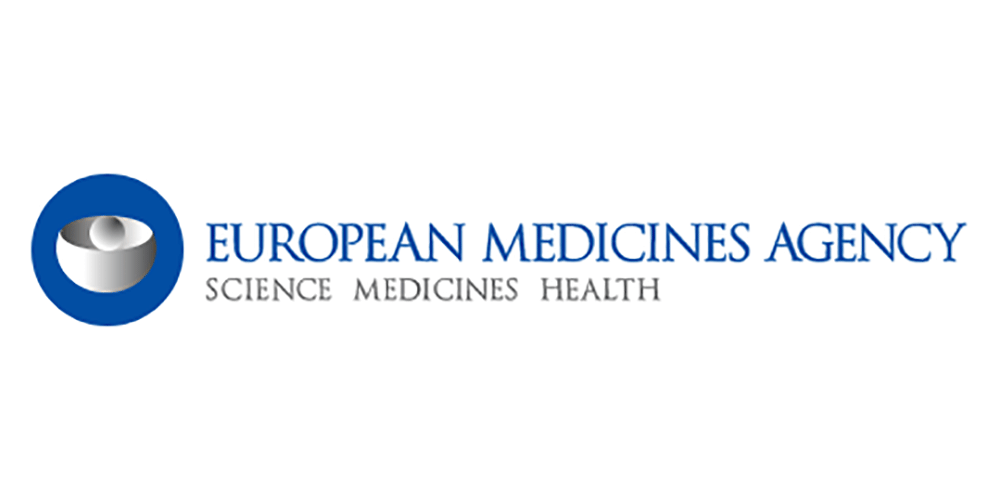News attention
02
2020
-
03
Scientific Research News | Research Progress of novel coronavirus Pneumonia (COVID-19) (XXXI)
1. COVID-19 Alert
■ On February 2, at a press conference held by the joint prevention and control mechanism of the State Council, Wang Guiqiang, director of the Department of Infectious Diseases of Peking University First Hospital, answered the question of how to understand the significance and value of the new coronavirus pathology report for the current diagnosis and treatment and the future epidemic prevention and control: "The new coronavirus infection is an emerging infectious disease, and its pathogenesis, pathological characteristics, histological damage and a series of other questions are not very clear, and pathological anatomy is crucial to answering these questions. Now there is indeed good news, there are 29 patients who died of pathological dissection, and the preliminary results can generally be seen such as sputum plugs, lung lesions, including the formation of some thrombuses, which has certain guiding value for our clinic. There is still a lot of work to be done in pathological anatomy, from gross specimens to histological to molecular pathology and etiology, and pathologists are now discussing the results that have been seen with clinical experts.
We know that the simple pathological results are only seen from the pathology, and must be combined with the clinical, including the patient's underlying diseases, his previous diseases, etc., to make a comprehensive judgment, whether the cause of death is due to new coronavirus infection, or death from his other underlying diseases, or because of inflammatory factor storms, etc., these data will soon be reported, and then for clinical treatment decision-making for important reference.
We know that pathological anatomy is a very high-risk work, so here we also thank the pathologists engaged in pathological anatomy for their contributions, but also thank the clinicians for their active mobilization work, and thank these deceased patients and their families for their strong support for pathological anatomy, because only the joint efforts of everyone can make us better understand the characteristics of this disease, better guide clinical treatment, and reduce the mortality rate. ”
Regarding the issue of the efficacy of traditional Chinese medicine treatment, Wang Rongbing, chief physician of the Department of Integrated Traditional Chinese and Western Medicine of Beijing Ditan Hospital, said at the meeting: "Now the coverage of integrated Chinese and Western medicine is very large, through the comparison of the treatment effect of the previous stage and the treatment effect of the intervention of traditional Chinese medicine in the later stage, it can be found that the participation of traditional Chinese medicine, integrated traditional Chinese and Western medicine treatment does play a better role and exerts a better effect." For mild patients, the use of Chinese medicine can improve his symptoms, the main symptoms are fever, cough, sore throat, fatigue, poor feeding, etc., quickly improve the fever symptoms or reduce the cough symptoms, so that his condition no longer develops to severe disease, for the patient to fight the disease has a very great help. For severe disease, the use of traditional Chinese medicine can not only improve these symptoms, but also improve respiratory-related indicators, such as blood oxygen saturation, etc., which blocks the process of continuing the development of the disease to critical disease, reduces the incidence of critical illness, and is equivalent to reducing the mortality rate.
Now the recipe recommended by the state is the second recommendation, clear lung detoxification soup. The drug was first discovered on January 1, and it was recommended for use in four provinces, and it was found to rapidly defervesce in more than 27 cases in four provinces. On February 300, the State Administration of Traditional Chinese Medicine and the Health Commission jointly issued a notice recommending this universal formula to the whole country, which can be used in light, heavy and even critical cases, and patients who have not used traditional Chinese medicine can also use general-purpose formulas. On February 2, it has been used in 6 designated medical institutions in 2 provinces, and 27,10 patients have been observed. Why do you do that? In line with the orientation of urgency, practicality and utility, observational studies have been carried out in clinical practice, 66 cases have been included in observation, 1183 cases have been discharged, 1183 cases have improved symptoms, and the efficacy is very good. So once again I recommended it in the sixth version of the plan. ”
In addition, regarding the question of how to exercise after the treatment and discharge of patients with mild and severe new coronary pneumonia, Xie Yuxiao, director of the rehabilitation department of China-Japan Friendship Hospital, said: "For patients after cured and discharged from the new crown pneumonia, under the premise of continuing to do a good job in safety protection and complying with two-week medical observation, for different types of patients, according to the patient's cardiopulmonary function, psychological state, physical fitness, etc., appropriate and feasible rehabilitation intervention can be given according to the person's appropriate and categorical guidance."
After discharge from the hospital, rehabilitation is mainly based on restoring physical fitness and psychological adjustment, and gradual aerobic training can be selected according to the patient's past exercise habits and hobbies, and gradually restore the activity ability before the onset. After critically ill patients meet the discharge criteria, a small number of people may still have general weakness, shortness of breath, respiratory muscle weakness and muscle atrophy, as well as some psychological problems for a period of time. They are first evaluated for cardiopulmonary function and systemic function, and if they have hypertension, coronary heart disease, diabetes, etc., they must work with relevant specialists to design personalized rehabilitation programs, including respiratory function training and physical training.
Critically ill patients should do physical training, especially aerobic training programs, and carefully formulate exercise prescriptions to gradually enhance exercise intensity and duration. Generally speaking, aerobic exercise requires training 3-5 times a week, each time is 20-30 minutes. If the patient is particularly prone to fatigue, it is necessary to adopt the form of intermittent exercise, for example, you can start with 3-5 minute intervals, and perform in 3 segments every day, and strive to achieve more than 10 minutes per segment in the second week. The mastery of the amount of activity, pay attention to the activity to have a simple conversation without interruption, no obvious fatigue after exercise, especially the next day without fatigue, such a situation is the most appropriate. ”
■ On February 2, the "China-WHO Novel Coronavirus Pneumonia (COVID-29) Joint Inspection Report" was released. The report points out that the new coronavirus is a virus of animal origin. Based on the available evidence, airborne transmission is not considered to be the main mode of transmission. Current genome-wide gene sequence phylogenetic analysis shows that bats appear to be the viral host, but the intermediate host has not been identified. Human-to-human transmission of the new coronavirus in China mainly occurs in families. Almost everyone is susceptible to the new coronavirus, and whether it has immunity after infection needs further research. Patients develop symptoms on average 19-5 days after infection, most of them can be cured of mild disease, and the high-risk group of severe disease and death is over 6 years old.
In terms of animal traceability of the epidemic, China has already worked in three important areas: early investigation of the case that became ill in Wuhan in December 2019; Environmental sampling of the Huanan Seafood Wholesale Market and other markets; Conduct a detailed investigation of the origin and types of wild animals sold at the Huanan Seafood Wholesale Market and the whereabouts of these animals after the market is closed.
■ Recently, a news commentary published on the Nature website said: Although pangolins are still on the list of suspected new coronavirus hosts, conclusive evidence has not been found.
Scientists are trying to trace the origins of the new coronavirus, which has wreaked havoc around the world. Three weeks ago, Chinese scientists based on genetic analysis suggested that pangolins that feed on ants may be intermediate hosts. The scientists examined the data, as well as three other reports on the genome of the pangolin coronavirus that were published recently. They say that although pangolins are still on the speculative list, the mystery of the origin of the new coronavirus is far from solved.
Public health officials want to identify the source of the coronavirus to prevent new outbreaks. Scientists hypothesized that the causative agent of the new coronavirus was transmitted from animals to humans, just like other coronaviruses. For example, the virus that causes severe acute respiratory syndrome (SARS) is thought to have been transmitted from civets to humans in 2002.
Dozens of infected people were working at a live poultry market in Wuhan at the beginning of the outbreak, but the source of coronavirus samples found in the market has not yet been identified. Currently, three separate Chinese teams are trying to trace the origin of the coronavirus, from the Chinese Center for Disease Control and Prevention, the Chinese Academy of Sciences, and South China Agricultural University.
At a press conference on February 2, researchers at South China Agricultural University announced pangolins as an animal source. The meat and scales of pangolins are popular in China, where the latter is used in traditional medicine. Although pangolins were banned from sale in China as part of a global ban, they are still smuggled in from a handful of Southeast Asian and African countries.
Researchers say they found a coronavirus in smuggled pangolins that is 99 percent genetically matched to the virus circulating by humans. But the results did not involve the entire genome. In fact, it is associated with a specific site called the receptor-binding domain (RBD).
The study's authors published the results of their analysis on bioRxiv, a biomedical preprint server, on Feb. 2. Xiao Lihua, a parasitologist at South China Agricultural University and author of the paper, explained that the press conference report was the result of "embarrassing miscommunication between the bioinformatics group and the research lab."
A genome-wide comparison found that the DNA of pangolin virus and human infection was 90.3% identical. RBD is a key part of the coronavirus, which enables the coronavirus to attach to and enter cells. Wang Linfa, a virologist at the National University of Singapore's School of Medicine, believes that even if the RBD of the two viruses is 99% similar, it is not necessarily enough to link them. Wang Linfa was one of the members of the team that discovered the origin of the SARS virus.
Last week, three similar comparative studies were published on the bioRxiv website. Among them, a paper published by the International Research Organization on February 2 found that the coronavirus in illegally trafficked pangolin frozen cell samples was 18.85 to 5.92 percent identical to the virus found in humans. Two other papers published Feb. 4 also looked at coronaviruses smuggling pangolins. They are 2.20% and 90.23% similar to the new coronavirus DNA, respectively.
Arinjay Banerjee, who studied coronaviruses at McMaster University in Hamilton, Canada, said genetic similarity should be higher than these studies reported before determining the host. He noted that the SARS virus shares 99.8 percent of its genome with civet coronavirus, which is why civet is considered the source of the virus. If pangolins are the root cause of the current outbreak, he said, it's not the ones used in these studies.
So far, the virus most similar to the human coronavirus has been found in a bat in Yunnan province. A study published on February 2 found that bat coronaviruses share 3% of their genetic material. Bats may have transmitted the virus to humans, but there are key differences in the RBD sites of the two viruses.
This suggests that this particular bat coronavirus did not directly infect humans, but may have been transmitted to humans through an intermediate host, the researchers said. Jiang Zhigang, an ecologist at the Institute of Zoology at the Chinese Academy of Sciences, said the papers raised more questions than they answered. If pangolins are the source of the virus and they come from another country, he asked, why are people in that place not reported being infected? Sara Platto, who studies animal behavior at Jianghan University in Wuhan, worries that all speculation about the origin of pangolins may drive people to kill them. After the outbreak of SARS, civet cats were hunted in large numbers. "The problem is not with the animals, but with our contact with them." Platto said.
2. COVID-19 epidemiological studies
■ On February 2, Liu, Xiaoyan et al. published "Therapeutic effects of dipyridamole on COVID-29 patients with coagulation dysfunction" in medRxiv, discussing the impact of dipyridamole on the course of the disease in patients with coagulation disorders [19]. Li, Jing, et al. published "Sex differences in clinical findings among patients with coronavirus disease 1 (COVID-2019) and severe condition" in medRxiv, discussing the impact of gender on disease course and prognosis in critically ill COVID patients [19].
■ On February 2, Academician Zhong Nanshan, academician of the Chinese Academy of Engineering, leader of the scientific research expert group of the joint prevention and control of the new coronavirus pneumonia epidemic, and others published a research paper entitled "Clinical Characteristics of Coronavirus Disease 28 in China" in the top international medical journal NEJM, which extracted 2019 from 30 hospitals in 552 provinces, autonomous regions and municipalities directly under the central government. Data on 1 laboratory-confirmed COVID-099 patients.
By analyzing large sample data, 1) the case fatality rate determined by this study (1.4%) was clarified, which was closer to the official data reported by the National Health Commission; 2) In this study, the median age was 47.0 years and 41.90% of women were found, and only 1.9% of patients had a history of direct contact with wild animals, 31.3% of patients living outside Wuhan had been to Wuhan in the past 2 weeks, and 72.3% of patients had been in contact with people in Wuhan area in the past 2 weeks; 3) pointed out that nearly half of the new crown patients may not have developed fever at the time of admission, but as the disease progresses, nearly 90% of patients have symptoms of fever; 4) It is clarified that digestive tract symptoms are relatively rare, but it also points out the evidence of the transmission of the new coronavirus through the digestive tract (the virus is isolated in feces, broken mucous membranes of the gastrointestinal tract, and bleeding sites), suggesting that all sectors of society need to pay attention to preventing fecal-oral transmission; 5) It is pointed out that there are indeed some new crown patients with positive nucleic acid tests, clinical symptoms but no imaging abnormalities at the time of admission, and the proportion of such patients in non-severe patients is much higher than that of patients with severe new crown infection; 6) For the first time, it was clarified that patients with severe new crown were admitted to the ICU, underwent invasive mechanical ventilation, and had a 9 times greater risk of death than non-severe patients.
In addition, the study found that one patient in the severe and non-severe groups had an incubation period of 24 days. However, a closer examination of the incubation period distribution of the entire population showed that there were 14 cases (13.12%) with an incubation period greater than 7 days, while only 18 cases (8.7%) had an incubation period greater than 3 days. Assessing the incubation period of a population based solely on the minimum and maximum values is prone to misinterpretation. After removing these irrational data, the researchers recalculated and came up with a median incubation period of 4 days. Therefore, to better represent discrete trends in the population, the researchers determined that the incubation period is in the interquartile range of 5 days (2 to 7 days) [3].
■ On February 2, Cheng Jilin of Fudan University and Liu Zhanju of Tongji University published an unreviewed research paper entitled "Clinical Features of COVID-27 Related Liver Damage" online on the preprint platform medRxiv, which included all 19 COVID-2020 cases confirmed at the Shanghai Public Health Clinical Center from January 1 to January 20, 1. Follow-up results were up to February 31, 148. The patient's clinical features, laboratory parameters (including liver function tests), medication, and length of hospital stay were analyzed. The study found that 19 patients (2020.2%) showed abnormal liver function (such as increased ALT, AST, GGT, AKP, etc.) upon admission. Patients with elevated liver function index (n = 19) were more likely to have moderately high fever (75% vs. 50.7%) and was significantly present in men (75.44% vs. 27.4%). The number of CD62+ and CD67+ T cells in the abnormal liver function group was significantly lower than that in the normal liver function group. There was no significant difference in prehospital drug therapy between the normal liver function group and the abnormal liver function group, and the utilization rate of lopinavir/ritonavir after admission to patients with neonatal liver injury was significantly higher than that of patients with normal liver function. Importantly, abnormal liver function after admission leads to a prolonged hospital stay.
In conclusion, this is the first analysis of the clinical features of liver injury associated with COVID-19 and the relationship between clinical medication and liver injury. 2019-nCoV may cause liver function impairment, and new-onset liver injury after admission is associated with lopinavir/ritonavir use and prolonged hospital stay. This finding is expected to provide some references for the clinical treatment of the current epidemic [4].
Bibliography:
[1] Liu X, Li Z, Liu S, et al. Therapeutic effects of dipyridamole on COVID-19 patients with coagulation dysfunction. medRxiv 2020:2020.02.27.20027557.
[2] Li J, Zhang Y, Wang F, et al. Sex differences in clinical findings among patients with coronavirus disease 2019 (COVID-19) and severe condition. medRxiv 2020:2020.02.27.20027524.
[3] Guan W-j, Ni Z-y, Hu Y, et al. Clinical Characteristics of Coronavirus Disease 2019 in China. New England Journal of Medicine 2020.
[4] Fan Z, Chen L, Li J, et al. Clinical Features of COVID-19 Related Liver Damage. medRxiv 2020:2020.02.26.20026971.
Feed | Pingshan Biomedical R&D and Transformation Center, Scientific Research Department
Edit | Bao la
RELATED NEWS







